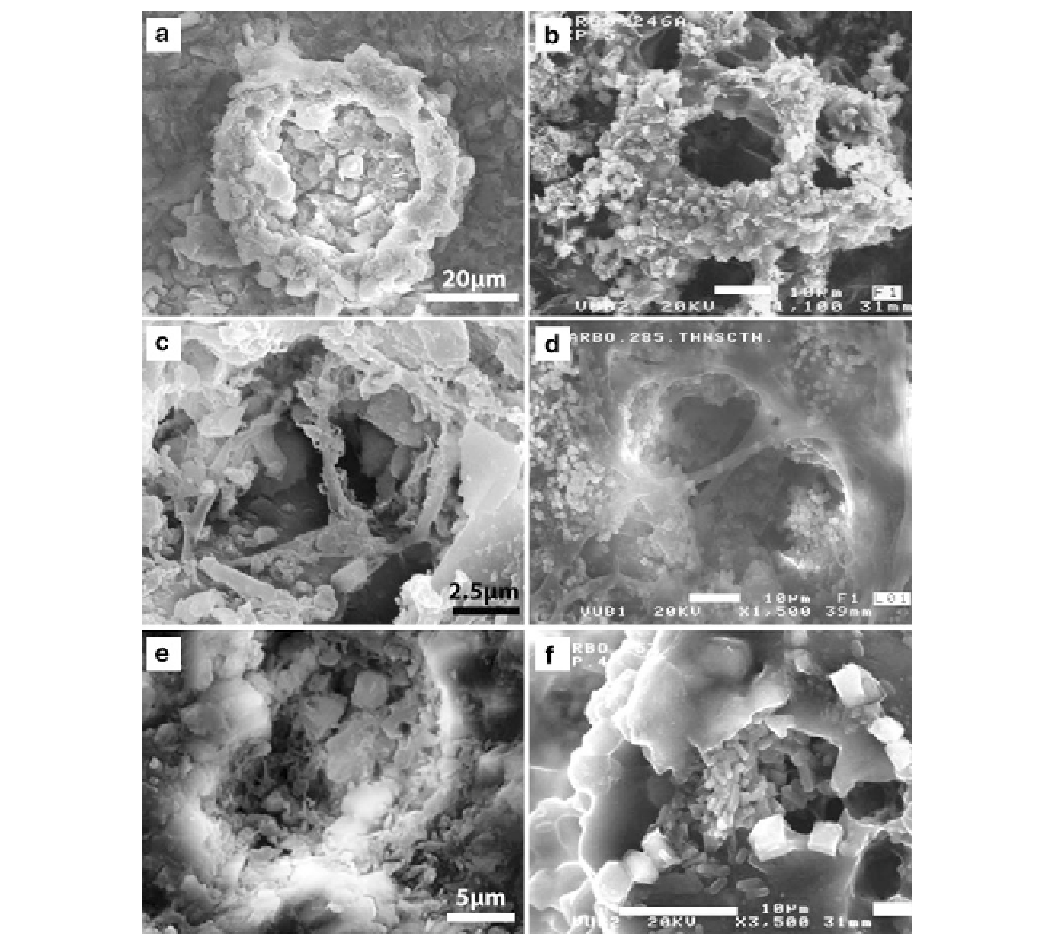Geology Reference
In-Depth Information
Fig. 5.9
Images showing comparative patterns of fungally produced
mineral deposition
“
nesting
”
and colonization of pits as fossil and
permineralized fungal relicts in the Neoproterozoic of Mouila section,
Gabon (Fig.
5.9a,c,e
) and of pits from
in vitro
experiments (Fig.
5.9b,d,
f
) on Carboniferous dolomite of the Bocahut quarry in France. Pictures
are from samples MOU22 (Figure a, mou22-22/2006/ap), MOU 19
(Fig.
5.9c,e
, 19-17, 19-38/2006/ap) and samples carb246A, 285 and
257 (Fig.
5.9a,b
). Elevated mineral
formed pits by fungi appears similar especially the lining of inner walls
of the pits. Note how the filaments
'
surface in (
c
) is rough and show
many blebs and attachments. These are crystal aggregates adhering to
their surface, a typical fungal phenomenon as is also shown in Fig.
5.9a
.
In (
d
) the colonizing fungi have already produced a large quantity of
crystals inside and outside the pit (
e
,
f
) Showing further the
of
minerals by fungal interaction with the substrates. In Fig.
5.9e
fine
crystals and filaments are littering the pit
“
nesting
”
formation surrounding a
pit. In (
a
) the pit appears filled with mineral crystals (dolomite) and the
mineral collar is a mixture of crystals and per-mineralized filaments. In
(
b
) the deep pit reveals similar mixture of neominerals (here Ca- and
Mg-oxalates) and fungal hyphae. (Fig.
5.9c, d
) Colonization pattern of
“
collar
”
s bottom as well as the walls,
while in Fig.
5.9f
a typical pit made in a dolomite crystal is filled by
fungally bio-mineralized prismatic and bi-pyramidal crystals of the
mineral weddellite
'
the stromatolitic levels. The fungal relicts are well-
embedded in the rock matrix and show homogenous early
diagenetic character which indicates their penecontem-
poraneous nature with lithification, i.e., the Neoproterozoic.
There are several lines of evidence that support our con-
tention that the pits formed while the sediment was already
lithified and that this rock constituted a good substrate for
fungal colonization:
1. The pits are hosted in a substrate formed from
uncompacted sediment. The grains (flat pebbles,
microbreccia, lumps, and aggregates) and the fenestral
cavities are undeformed, and they do not exhibit any

Search WWH ::

Custom Search